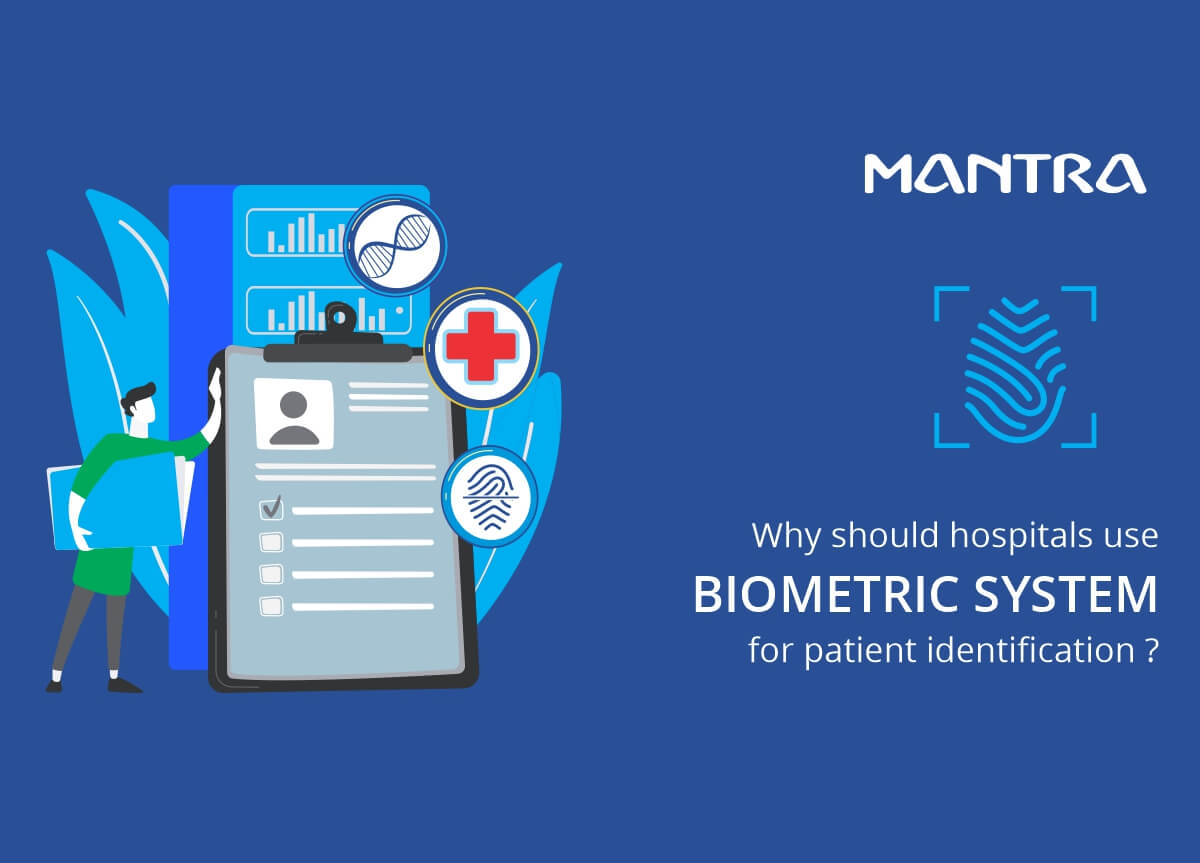
Health care is a sector where 100% accuracy in identification is necessary. Misidentified patients may receive the wrong diagnosis results and treatment. Therefore, it's essential to correctly identify patients when performing clinical operations, conducting tests, and medication procedures. In addition, disease surveillance relies heavily on identification. For example, In the present Covid 19 scenario, it is crucial to know whether a person is vaccinated or has tested negative while travelling on airlines or trains. Biometric data tied to such tests of a person can reduce misidentification issues.
Hospitals can link a person's biometric identity to his health record under the government of India's Ayushman Bharat Yojana scheme. For identification verification, the hospital can utilize the Aadhaar number or any state or national ID. Those hospitals that adopted biometric systems benefited during the pandemic in identifying patients and verifying their medical records. In addition, biometric identification linked to electronic health records can transform the health sector. This blog discusses how it happens.
Causes of Misidentifications
The current system uses paper records or electronic health records without biometric identity. In fact, as per the studies conducted in the United States, it was found that the chances of patients' misidentification were a common phenomenon. Moreover, because several patients share the same name and date of birth, using tags or barcodes reduces the possibilities of misidentification but couldn't eliminate it.
According to various studies conducted by WHO, patient misidentification is the cause of performing the wrong medical procedure in patients. Misidentification can lead to duplication of data, which will result in sufficient revenue loss due to repeated tests. It might take hours for hospital staff to repeat the identifying and diagnosing procedure, resulting in lower staff productivity. When shifting a patient to a testing facility or another hospital, hospital staff may need to spend more time managing the master patient index.
Biometrics for patient identification
The health care sector needs a faster and more accurate identification method. Biometrics are suitable for the healthcare system since all Indian citizens already have a biometric ID (Aadhaar). It would be easy to verify a person with his ID. The advantages of using biometric identification in the healthcare industry are listed below:
Eliminate duplication of patient record
If the patient's data can't be found in the master patient's index immediately, hospital staff might create a new record. That will result in a slew of duplicate patient records. Biometric identification can eliminate this problem. The patient only needs to verify his identity using his biometrics once. After that, the system can immediately fetch a patient's health record.
Accuracy
Biometrics is the most accurate method of authentication. For precise patient identification, a multimodal biometric verification method is employed at the hospitals. Sometimes, it will be challenging to verify patients admitted in casualty. In such scenarios, more than one biometric modality is necessary. In India, under the Ayushman Bharat Yojana, Iris and fingerprints are used.
Eliminates Overlay
Overlays happen when absolute identification of a patient is not possible. For example, there could be several patients with the same name and date of birth, allowing them to enter the incorrect medical history into a patient's record by mistake and, at the same time, missing vital medical information from another account.
Speed
Biometric authentication takes only a few seconds. It could be done while the patient is being admitted. There is no need to submit additional documentation to obtain hospital medical subsidies.
Streamline insurance services
There will be no more faking insurance documents, and there will be no more unnecessary insurance denials due to insufficient data in medical records. That will inspire more people to insurance policies. Under the Ayushman Bharat Yojana scheme, the government of India has provided insurance to 500 million people, and the target is 900 million people, i.e., 70% of the population.
Conclusion
Empanelling a biometric identification program can streamline the identification and billing processes, in addition to the benefits of treatment and services.
Comments